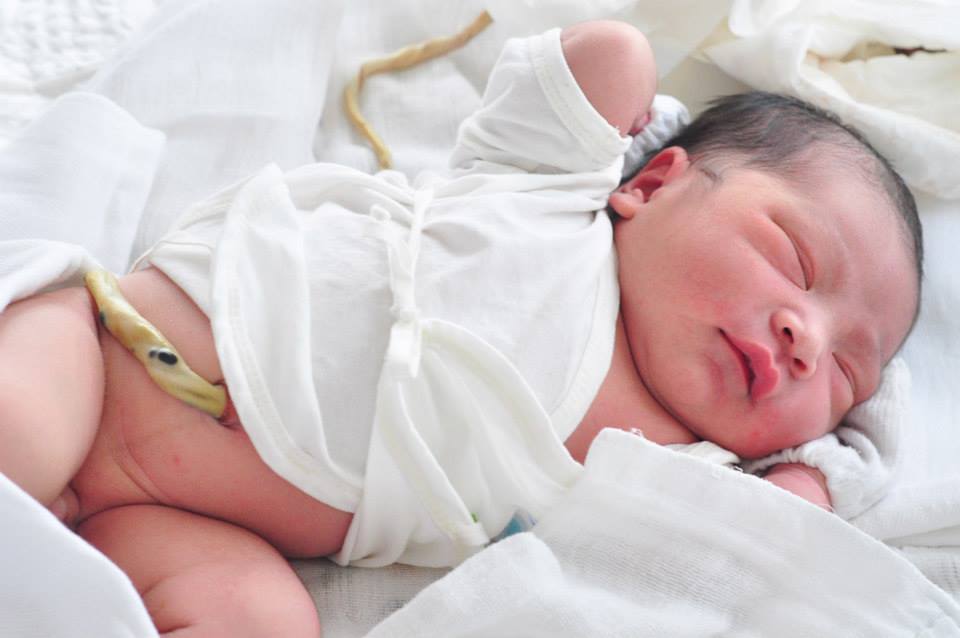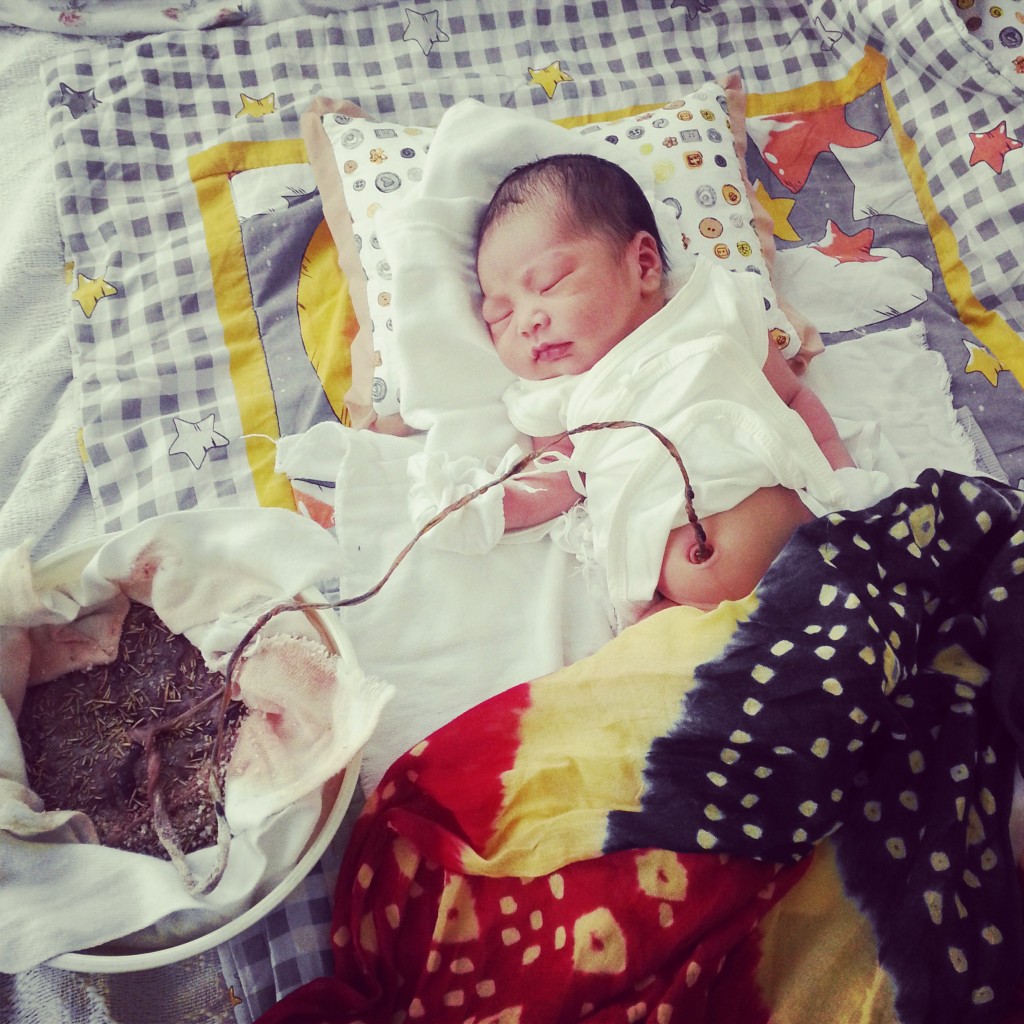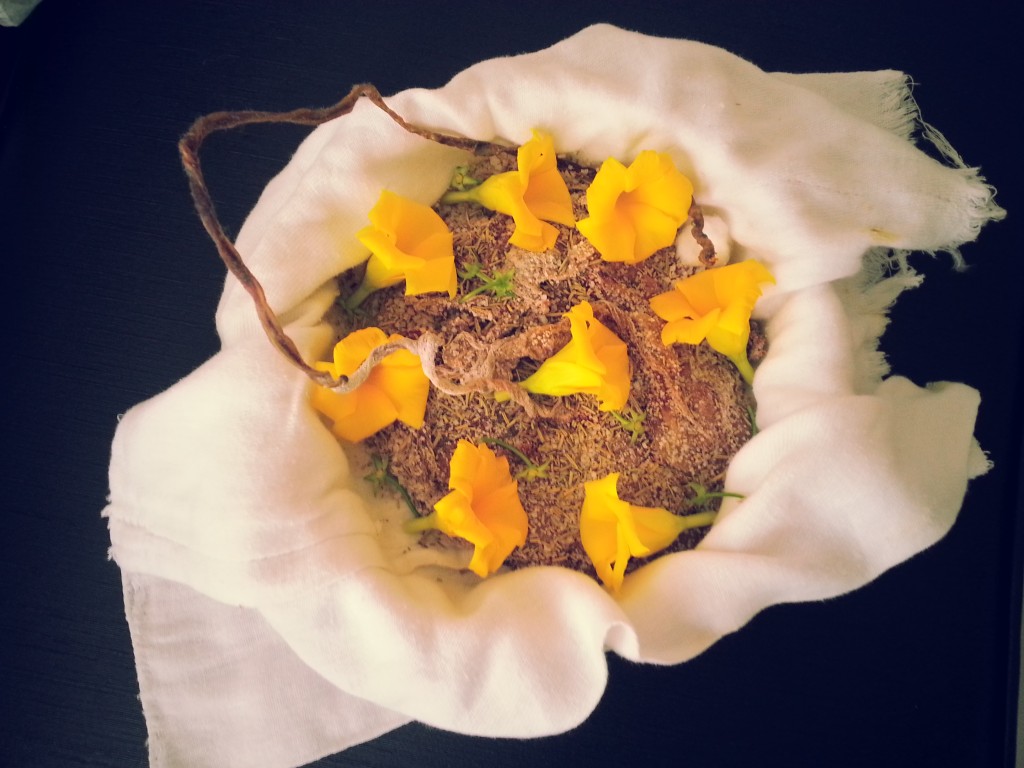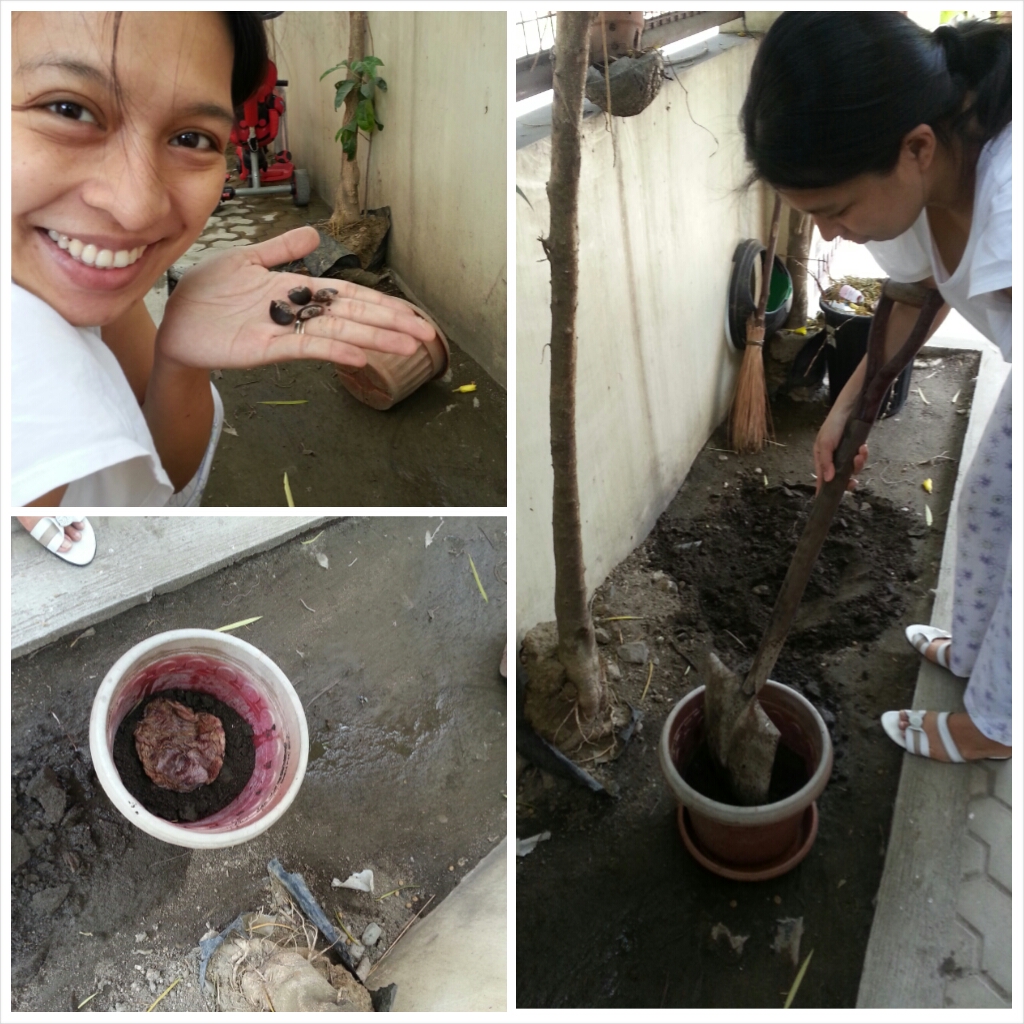During my pregnancy with our firstborn, we attended Chiqui Brosas-Hahn’s childbirth preparation class where we learned many practices how to give our babies the best headstart as they arrive earthside–one of which is delayed cord clamping. Unfortunately in the hospital, even if it was indicated in the birth plan, it might not be followed due to certain circumstances.
When Ziki was born they had to take him away immediately fearing that he might have aspirated meconium because my amniotic fluid was stained. So my skin-to-skin time and breastfeeding within the first few hours after delivery was cut short. Imagine the baby’s stress of having to be separated from those that kept him secure–mother and placenta. And also not being able to take in all the good stuff from the placenta because it is hospital protocol to clamp and cut the cord within minutes. No wonder Ziki’s cries sounded so loud and angry, if not fearful and traumatized.
I came across waterbirth and lotus birth as I was researching about natural childbirth because I felt Ziki and I was robbed of something so precious when we were at the hospital. I wanted my next childbirth to be as gentle as possible, providing the best environment for my child to come out to. Since we became pregnant back in August, I have not stopped praying that God would let me deliver our second child naturally through waterbirth and do lotus birth.
Waterbirth, while unconventional to some, is already gaining recognition around the world especially after Ibu Robin Lim was named CNN Hero of the Year in 2011. She also advocates lotus birth, as with other midwives who understand the importance of keeping the umbilical cord and placenta intact after birth. Lotus birth still remains a taboo for most people just because they haven’t been properly informed of its benefits.
Lotus birth, simply put, is when you do not clamp or cut the cord after the baby is born. Both the umbilical cord and placenta will stay attached to the baby until it naturally dries and falls off on its own. Because it is still attached, the baby continues to receive nutrients (like iron) and red blood cells from his placenta which is very crucial to stabilize his body as it adjusts to its new environment and for optimum development.
There are physical, emotional and spiritual sides to doing this. Physical, being that baby gets utmost health benefits in his first hours of being out of the womb and lessens the risk of infection. It also provides quicker recovery and peaceful adjustment for both the mother and the baby as they can’t be exposed to too many people, at least for the first three days after delivery. Emotional, because it is gentler and relaxed not having to whisk the baby away prematurely to clamp and cut the cord. Spiritual, because in most beliefs the baby, the cord and the placenta are considered one unit and must be kept together until nature separates them in its right time.
I agree with these and to add, I’ve had quite a scare when Ziki’s umbilical cord was slightly infected and took almost two weeks before it finally came off, so I won’t have that anymore.
There are tons of resources online showing the benefits of lotus birth and I devoured them throughout my pregnancy. It provided me with much information that helped me choose this decision. Although my husband was a skeptic at first, he eventually understood the benefits of it and agreed (believe me, it would take much prayer and education for a concerned husband to jump in that wagon).
Finally when Amos came out, we left his umbilical cord and his placenta attached without clamping it, until all of its goodness has been transferred to him. Much better than cord banking, if you ask me.
 Amos and his umbilical cord at Day 1 [Photo credit: Riz Oyos]
Amos and his umbilical cord at Day 1 [Photo credit: Riz Oyos]
How we prepared for Lotus Birth
It may sound complicated but doing a lotus birth is actually simple. Though it took me skillful maneuvering of Amos whenever I nurse or carry him because of his cord and placenta. But it wasn’t too difficult since we just had to stay in the room and on the bed.
I had a strainer (actually the steamer tray from our rice cooker) cleaned and prepared, lined it with bed pad to absorb the blood for the first few hours (we later changed it to lampin the next day) to contain the placenta after it was birthed.
Our midwife, Deborah, took a pail of water beside me and Amos to cleanse off the placenta with excess blood. After cleaning it, salt was applied to help with the drying process and to alleviate the meaty smell as it dries. We also put rosemary and lavender essential oil to provide a more therapeutic scent for both baby and I since we all have to be kept together until the cord detaches.
We just kept reapplying the salt, rosemary and lavender oil daily. There was no need to wet it again because then it would slow down the drying process. The rosemary and lavender oil are just optional. You may actually use other herbs like cinnamon or whatever smelled nice to you. And I later on realized you can use fresh sampaguita flowers instead of lavender oil (although the lavender oil have therapeutic benefits too).
 Day 2 of Amos and his “twin”. See how the cord has dried.
Day 2 of Amos and his “twin”. See how the cord has dried.
Since the cord needed to be exposed to air to dry more quickly, I just partially dressed Amos–his shirt half open at the navel area and his cloth diaper worn loose. The cord normally separates from the navel within 3 to 7 days after being exposed to air. Amos’ umbilical cord detached morning of the fourth day.
 Amos and his placenta at Day 4. Such a peaceful separation.
Amos and his placenta at Day 4. Such a peaceful separation.
 What beautiful part of pregnancy this is! How amazing that God made the placenta!
What beautiful part of pregnancy this is! How amazing that God made the placenta!
Some lotus birth stories that I’ve read attest how the babies were distressed just before their cord separates. With Amos, though he wasn’t distressed, I noticed that he cried more than the previous days. I guess this is how babies say goodbye to their wombmate–the placenta.
After it came off, my husband and I planted the placenta with caimito seeds in a pot. We will uproot and transfer it once we acquire our own house. I’ve always wanted to have a big tree in our backyard where our children can climb and create wonderful memories.
I chose lotus birth because I wanted the most gentle and peaceful transition for Amos after his journey from the womb. I have noticed how calm and serene Amos is since he was born. I’m not sure if this calmness is his innate personality or if it was due to the waterbirth and lotus birth. But I’d like to think both. I am glad to have gone down this path because I believe I have given my son the best start in life.

Ate Normi, this is really educational. Since the time I read your first blog on lotus birth, I talked to Dan about it na. I’d like to have a natural birth din and I’d love to give our future babies the best care I could give.
However, I lack knowledge with the water birth. Some say kasi na dapat hindi sa water ipanganak ang baby… What can you say about it?
Thank you!
Glad to know that! :) Well for those who say na hindi dapat sa water ipanganak, bakit daw? Usual reason: baka mainhale ng baby ang water. But think about it, san ba galing si baby? Sa amniotic sac na puno ng amniotic FLUID. Meaning they have been inhaling water for many months already. As for the water not being sterile, it doesn’t really have to be, unless talagang contaminated ang tubig to begin with. But truth is, babies are really not birthed in a sterile environment. Amos was birthed via water from tap and he is a healthy boy. :)
Very informative article! After reading this, am now considering lotus birth to our next child (Lord willing soon!). :) I just hope to gain my hubby’s approval. Congratulations and God bless!
Normeeee! You’re so brave! :) What an inspiration :D
Hi, I am also considering a gentler birthing experience for my second child. Would you be able to give me information on where I can get midwife support that you received? I’m in the Makati area. I’m also a full time mother, so cost is a concern. I hope to hear from you soon.
Thank you very much.
Hello Diana! Glad to know you are choosing a gentler birth. I think I did include the link to Shiphrah Birthing Home website. You may contact Deborah or Lornie thru this number (02)6607565. They are located in Taytay, Rizal. :) Join our FB Group also, Gentle Birth in the Philippines. :)
I loved your story! It was informative and beautiful! Thank you for sharing through IG.
Hello :) You’re post is really inspiring. I am now 3 mos pregnant and this is my first time. Reading your blog is a very good timing for me as I have been thinking of my birth plans.
I am kinda scared to choose the water birth and lotus birth. But I am praying really hard to choose what is right for my baby.
Hello Lara! I’m glad it has enlightened you. Truth is our babies really don’t know yet what is right for them, that is why they rely on us, their mothers, to decide on the best choice. As long as your birth requests are respected and given—you don’t feel violated or imposed upon, and you and your baby are both happy, loved and safe—then that would be the best childbirth experience you will ever have. :)
Will post something about this again soon, so do watch out for that. :) And join the Gentle Birth in the Philippines group in Facebook to learn more about this.
Hi Normi,
Good day! This is beautiful. I would like to ask you more about your home water birth experience. Would it be alright to ask for your email address so I can correspond with you about it?
Hello Faith! Sure! Please email me at normeee@gmail.com